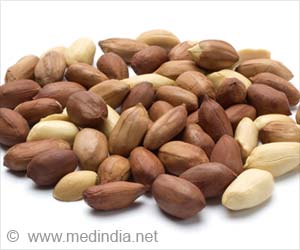Acupuncture is effective in providing acute analgesia for patients with back pain and ankle sprain.
Highlights
- Pain is the most common reason people come to emergency, but is often inadequately managed.
- A study was done to assess analgesia provided by acupuncture, alone or in combination with pharmacotherapy.
- The results show that acupuncture was effective in providing long-term relief for patients who came to emergency in considerable pain.
How Does Acupuncture Help in Relieving Pain?
Acupuncture has become popular throughout the world in the past few decades. It is now recognized as a simple, safe, effective and economical form of therapy, besides being free from side effects. It has not only been used as an anaesthetic agent, but also in many diseases that are resistant to conventional forms of therapy.
Pain signals pass through a number of high-traffic 'gates' in the spinal chord, as they move from the area of injury upward into the brain. Like a road or highway, these nerves can handle only a limited number of nerve signals at a particular time.
Under normal circumstances, this gate is wide open and pain impulses get through very easily. But when acupuncture needling is carried out, another stream of non- painful impulse flow towards the spinal chord.
"While acupuncture is widely used by practitioners in community settings for treating pain, it is rarely used in hospital emergency departments," Cohen said.
"Our study has shown acupuncture is a viable alternative, and would be especially beneficial for patients who are unable to take standard pain-relieving drugs because of other medical conditions.
But it's clear the need for more research to develop better medical approaches to pain management, as the study also showed patients initially remained in some pain, no matter what treatment they received.
About the Trial
Patients presenting to emergency departments in one of four tertiary hospitals in Melbourne with acute low back pain, migraine, or ankle sprain were recruited for the study.
Between January 2010 and December 2011, 1964 patients were assessed ; 528 patients with acute low back pain (270 patients), migraine (92) or ankle sprain (166) were randomised to acupuncture alone (177 patients), acupuncture plus pharmacotherapy (178) or pharmacotherapy alone (173).
One hour after treatment, less than 40 percent of patients across all three groups felt any significant pain reduction (2 or more pain points), while more than 80 percent continued to have a pain rating of at least 4.
But 48 hours later, the vast majority found their treatment acceptable, with 82.8 percent of acupuncture-only patients saying they would probably or definitely repeat their treatment, compared with 80.8 percent in the combined group, and 78.2 percent in the pharmacotherapy-only group.
"Some Australian emergency departments already offer acupuncture when trained staff are available but further studies are needed on ways to improve pain management overall in emergency departments, and the potential role for acupuncture in this," Cohen said.
Acupuncture is a safe and acceptable form of analgesia, but none of the examined therapies provided optimal acute analgesia. More effective options are needed.
Reference
- Marc Cohen et al., Acupuncture for analgesia in the emergency department: a multicentre, randomised, equivalence and non-inferiority trial, Medical Journal of Australia (2017) http://dx.doi.org/10.5694/mja16.00771.
Source-Medindia













